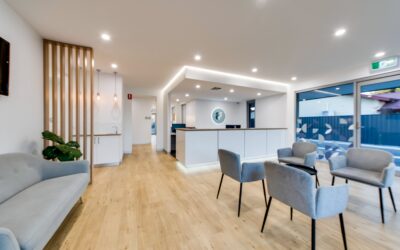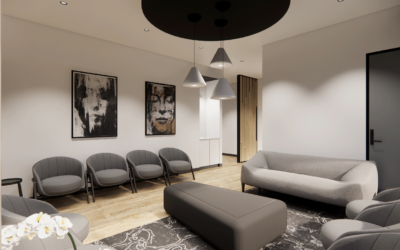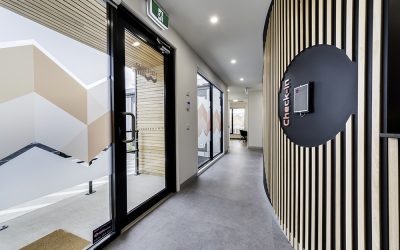If the sole purpose of buildings is the form or a place where humans can simply gather for some specific purpose, why then would they have the ability to positively impact us physiologically?1 Neuroarchitecture marries the disciplines of neuroscience, psychology, and architecture to create a system that optimises health, human behaviour and well-being in the environments we build. OPTIMA believes in the principles of neuroarchitecture to provide the informed framework behind the architectural and design decisions we make to deliver you not only the dental practice of your dreams but a practice to aspire to.
Sensation and Perception
How we perceive places has a direct influence on the most primitive part of our brains, the unconscious process of ‘habitat selection’ due to cells in the hippocampal region of the brain we are keenly aware of space, geometry and how spaces are organized, storing information in ‘cognitive maps’. This navigation leads us to determine not only what feels safe but also what feels good to experience – the positive outcome of a beautiful space.
Plants or pictures of nature in your dental practice can have a profound effect on the stress levels and wellbeing as supported by findings in environmental psychology. Considering our first environment as humans were among nature, it makes perfect sense that nature would make your patients feel at ease.
The organisation of your practice has a direct effect on your patient’s brain and is one of the underpinning principles of neuroarchitecture – all day your patients are making micro-decisions. Providing them with a decluttered and logically organised space is akin to giving their mind breathing space, their cortisol levels drop as they are in an environment that allows them to mentally and physically unwind.
Minimalism, a few defined focal points, hidden storage and everything having a logical place not only creates a space of relaxation for your patients but also increases the workability and functionality of your practice for your staff.
Shapes and Movement
The reward centers in our brain are activated positively by curved contours, contours that also aid the flow and rhythm of your practice. One study has found that they encourage and increase brain activity. Another study has found ‘that our moods and arousal levels increase when we encounter varied or ‘textured’ façades.’2
Softening hard lines in your practice with rounded cushions, coffee tables, and hangings provides visual variation. Adding texture through materials, feature walls, plants, and decor create an experience tailored to the needs of your patients while also providing a sense of care in their health and wellbeing.
The questions that neuroarchitecture seeks to address will bring about a framework with the ability to positively impact human health and experience on a global scale. Scientifically understanding what factors enhance healing and minimise stress will provide verification for the interconnected parts that make up a holistic approach to dental health. The future of dental health is the creation of human-centric practices, neuroarchitecture provides how and why to changing the public perception of dentistry.
—————————————————————
1 https://scholarship.claremont.edu/cgi/viewcontent.cgi?article=2850&context=cmc_theses
2 http://www.rocagallery.com/the-built-environments-new-frontier



